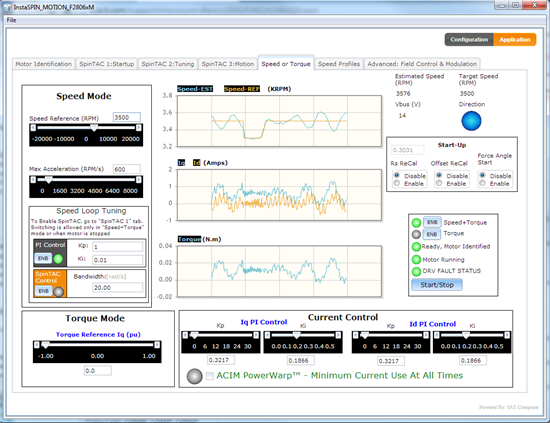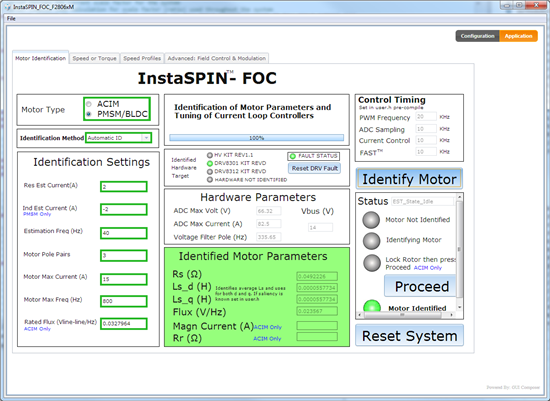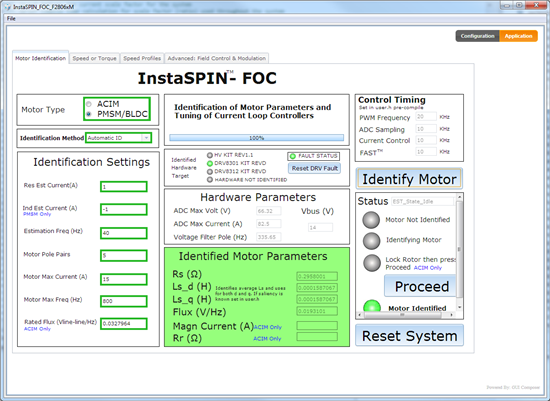Hi,
I have encountered a problem with the motors I have run with the DRV8301-HC-EVM equipped with the F2806x cCard kit.
The motor speed starts to oscillates quite badly at high speed (depending on motor but below rated speed, from 3500rpm and up, see attached picture of the GUI) under no load resulting in a significant increase in current and several times it has set the short circuit protection of my power supply at some 25A. The motors I have tried with are in the 100-150W range, 12V, 6-10 pole machines and the behaviour is the same when operating from the GUI or the labs. The identification process works fine with a slight increase in Est Current (2,-2) and Est Frequency (40).
When decreasing the proportional and integral parts of the speed controller it is possible to reach slightly higher speeds but still not as high as rated, the response is then also very slow.
Is this just a matter of fiddling with the controller parameters or is there something else I can look into?
Regards
Anton




